DOH Medicaid Update August 2006 Vol. 21, No. 9
Office of Medicaid Management
DOH Medicaid Update
August 2006 Vol. 21, No. 9
State of New York
George E. Pataki, Governor
Department of Health
Antonia C. Novello, M.D., M.P.H., Dr. P.H.
Commissioner
Medicaid Update
is a monthly publication of the
New York State Department of Health,
Office of Medicaid Management
Brian J. Wing, Deputy Commissioner
Table of Contents
Preferred Drug Program Update
Changes to Pharmacy Reimbursement, Effective September 5, 2006
Physician Reimbursement for Allergen Preparation: Change in Billing
Fee Schedule Changes for Prosthetics
Omni 3750 Point of Service Users
Prior Approval Fax Capability for Dental, Physician, Hearing Aid, Eye Care, Nursing and DME/Supplies
National Provider Identifier News
Deficit Reduction Act of 2005: Long Term Care Eligibility Changes
Prepayment Review has Ended for Some Procedures
Prior Approval Reviews for Clients Residing in Western New York
Diabetes Information
Smoking Cessation Information
Family Health Plus Covers Family Planning and Reproductive Health Services
Your Provider Manual is Going Online
Medicaid Information Available Online
Seminar Schedule and Registration
Recipient Education: Wear Sunscreen
HIV/AIDS Training: Free and Available to Non-Physician Health and Human Service Providers
Provider Services
Important
Information for
Prescribers
and Pharmacists
Change Of Implementation Date For The New Medicaid
Limited Wrap-around Benefit
Return to Table of Contents
The June 2006 Medicaid Update and the June 2006 Medicaid Update Special Edition informed providers that Medicaid would be implementing a limited Medicaid wrap-around benefit for dual eligible recipients, effective July 1, 2006.
Due to recent legislation, the effective date has been changed to January 1, 2007.
Medicare Part D drug plans continue to be the primary payor for prescription drugs for dual eligible recipients. However, Medicaid will continue to provide a wrap-around benefit which covers medications that are included in the Part D benefit in the following circumstances:
- these drugs are not covered by the specific plan,
- the patient does not meet the plan's utilization management requirements, or
- quantity limits are inconsistent with the prescribed amount.
All Medicaid rules apply to wrap-around benefit claims, including any Medicaid prior authorization requirements and co-payment guidelines. If the drug requires prior authorization under Medicaid, the prescriber must initiate the Medicaid PA process for duals by calling:
1-877-309-9493.
Important Information for Prescribers
Prescribers have a choice whether to use drugs on the Part D plan's formulary or select a formulary drug that does not require prior authorization. However, if it is medically necessary that their patient have a non-formulary drug, or a drug that requires prior authorization, then the prescriber should seek an exception request or prior authorization from the patient's plan.
Please remember that the Medicaid wrap-around program cannot be used to obtain early refills, refills for lost or stolen drugs, extended or vacation supplies. NYS Medicaid continues to cover certain drugs which are excluded from the Part D benefit, such as barbiturates, benzodiazepines, some prescription vitamins, and non-prescription drugs.
Important Information for Pharmacists
Pharmacists must first complete all the following necessary CMS procedures to assure Medicare Part D coverage is available. When these procedures are attempted, and coverage by Part D has failed, the pharmacist may dispense the medication to the recipient and submit a claim to Medicaid. If the drug is covered under Medicare Part B, and the recipient is eligible for coverage, the pharmacist is required to seek coverage under that payor prior to billing Medicaid.
Pharmacist Procedures for Billing Medicare Part D Plans
Pharmacists are to use the following processes when experiencing difficulty with the recipient's Medicare plan enrollment, cost sharing, or coverage of medications:
- Check for enrollment in a Part D plan, by asking for a plan ID card or other documentation from a Part D plan, or, submit an E1 query. If the E1 response is only a telephone number, call that telephone number to obtain the billing information from the plan. Pharmacists can also get information on a beneficiary's enrollment, and on how to contact the plan by calling Medicare at 1-800-MEDICARE (1-800-633-4227).
- If the individual is enrolled in a plan, but is not being charged the correct dual-eligible co-payment amounts, contact the drug plan (which has expedited access for pharmacy requests to adjust co-payments), or, if the situation is urgent and other steps have not worked, contact Medicare for urgent caseworker assistance for the beneficiary.
- If there is no evidence of a Part D plan enrollment but there is clear evidence of both Medicare and Medicaid eligibility (for example, a Medicare card and a Medicaid card or prior history of Medicaid prescription coverage at the pharmacy) bill the POS Contractor (WellPoint) for the claim. The pharmacist can also call 1-800-MEDICARE to confirm that the beneficiary is in Medicare.
Procedure for Billing Medicaid
After completing all necessary CMS procedures to assure Medicare Part D coverage, and failing to gain coverage, the pharmacist may submit the claim to Medicaid.
The claim MUST include the following additional information, which verifies that the pharmacist has attempted, and failed to bill Medicare, in order to receive payment approval:
- A value of "2" (Override) in the Eligibility Clarification Code - Field 309-C9
- A value of "03" (Other coverage, Claim not covered) in the Other Coverage Code - Field 308-C8
- A value of "07" (Medicare Approved) in the Other Payer Amount Paid Qualifier - Field 342-HC
- A value of "0.00" (dollar amount) in the Other Payer Amount Paid - Field 431-DV
Note
If your billing system does not allow for the entry of the "07'" qualifier and the "0.00" dollar amount in fields 342-HC and 431-DV, it is acceptable to leave them blank.
Preferred Drug Program Update
Phase II of the Medicaid Preferred Drug Program is coming!
Return to Table of Contents
Effective September 28, 2006, the following drug categories will be added to the Medicaid Preferred Drug Program (PDP). Prescriptions written on or after September 28, 2006 for non-preferred drugs in these categories will require prior authorization.

- Leukotriene Modifiers
- Hepatitis C Agents
- Thiazolidinediones
- Prescription Proton Pump Inhibitors (PPI)
- Second Generation Prescription Antihistamines (SGA)
- Long Acting Narcotics
- Serotonin Receptor Agonists (Triptans)
- Beta Blocker Combination Products
- Anti-Emetics
- Calcitonins
- HMG-CoA Reductase Inhibitors (Statins)
- Intranasal Steroids
- Sedative Hypnotics
- Triglyceride Lowering Agents
More detailed information, including the updated Preferred Drug List (PDL), will be published in the September 2006 Medicaid Update. Prescribers and pharmacists will be receiving additional information by direct mail.
To view the most current quick list of preferred drugs, visit
https://newyork.fhsc.com/downloads/providers/NYRx_PDP_PDLquicklist.pdf
To view the most current full listing of preferred and non-preferred drugs, visit:
https://newyork.fhsc.com/downloads/providers/NYRx_PDP_PDL.pdf
Program worksheets, fax forms, and additional information are available at http://newyork.fhsc.com and http://www.nyhealth.gov
.Remember!
If you prescribe a preferred drug, no prior authorization is necessary.
However, if you are ordering a non-preferred drug, call the Medicaid Prior Authorization Call Center at (877) 309-9493. Prior authorization requests for drugs in the Preferred Drug Program are processed through a live call center. Select option "1" and speak with a call center representative to obtain the prior authorization.
For billing questions, contact 1-800-343-9000.
For clinical concerns or preferred drug program questions, contact 1-877-309-9493.
For Medicaid pharmacy policy and operations questions, call (518) 486-3209
Changes to Pharmacy Reimbursement
For Generic Drugs
Effective September 5, 2006
Return to Table of Contents
Legislation that passed in 2004 directed the Medicaid program to develop and apply a State based maximum acquisition cost (SMAC) to Medicaid reimbursement of generic drugs prior to availability of a federal upper limit (FUL) price.

Effective September 5, 2006, SMAC prices will be applied when determining the estimated acquisition cost of multi-source generic drugs unless an FUL price is available.
The maximum reimbursable amount (MRA) for Medicaid reimbursable drugs is available on the internet by accessing the following website:
http://www.emedny.org/info/formfile.html
For Medicaid pharmacy policy and operations questions, please call (518) 486-3209.
Physician Reimbursement For Allergen Preparation
Per Dose Versus Per Vial Billing Change
Return to Table of Contents
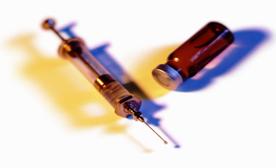
Billing instructions for preparation of allergens for administration by, or under the supervision of, another physician has changed.
The payment system has been updated to accommodate per dose billing, rather than per vial billing.
Effective for dates of service on or after August 1, 2006, payment for code 95165 Professional services for the supervision of preparation and provision of antigens for allergen immunotherapy; single or multiple antigens (specify number of doses) will be made at $2.50 per dose.
For proper payment to be made, the unit field on the claim must reflect the total number of prepared doses in the vial(s). On the eMedNY-150001 (1/04) paper claim, the unit field is Box # 24(i), and on the 837P electronic claim, it is SV104, loop 2400.
Adjustments may be made for claims billed with procedure code 95165 for dates of service on or after August 1, 2006, if the claims were not submitted in the above manner.
For questions on claim form completion, call CSC at:
(800) 343-9000.
For other questions on this change, contact the Division of Medical Review and Provider Enrollment at:
(518) 474-8161.
Attention
Durable Medical
Equipment
Providers
Fee Schedule Changes
For Prosthetics
Return to Table of Contents
Please make the following changes, noted in BOLD, in your Durable Medical Equipment (DME) Fee Schedule (Rev. 4/1/06):
L5681 F7 Addition to lower extremity, below knee/above knee, custom fabricated socket insert for congenital or atypical traumatic amputee, silicone gel, elastomeric or equal, for use with or without locking mechanism; initial only (for use other than initial, use code L5673 or L5679). Effective for dates of service (DOS) on or after August 1, 2006, price is $729.24 (p. 85)
L5683 F7 Addition to lower extremity, below knee/above knee, custom fabricated socket insert for other than congenital or atypical traumatic amputee, silicone gel, elastomeric or equal, for use with or without locking mechanism, initial only (for other than initial, use code L5673 or L5679). Effective for dates of service (DOS) on or after August 1, 2006, price is $729.24 (p. 85)
Questions? Please contact the Division of Medical Review and Provider Enrollment at 518-474-8161.
Omni 3750 Point of Service Device Users
Do Not Use Digital Telephone Line
Return to Table of Contents
If you are currently using an Omni 3750 Point of Service (POS) terminal to verify client eligibility or to request service authorizations, and you are considering changing your telephone service, you should be aware that the POS terminal may not function on a digital telephone line, such as an internet-based telephone service that uses Voiceover IP.
If you do switch to a digital telephone service, you will need to make sure the digital line supports the POS terminal, or keep an analog telephone line available to continue to utilize the Omni 3750 POS terminal.
Alternative Options for Verifying Eligibility
If you have access to the internet, you may wish to consider using the ePACES system. ePACES is free and can perform the same functions as the Omni 3750 terminals, plus much more. ePACES is a web- based program that allows enrolled providers to submit the following transactions:
- Claims
- Eligibility Verifications
- Utilization Threshold Service Authorizations
- Claim Status Requests
- Prior Approval Requests
If you are interested in ordering a new Omni 3750 or enrolling in ePACES, please visit our web site http://www.emedny.org, click on Specifications then "Frequently Asked Questions" for either the POS Device or ePACES.
Questions regarding the Omni 3750 POS terminals or ePACES should be directed to the eMedNY Call Center at: (800) 343-9000.
Prior Approval Fax Capability for
Dental, Physician, Hearing Aid, Eye Care,
Nursing, and DME/Supplies
Return to Table of Contents
NOTE: The information contained in this article does not apply to approvals being sought through the Preferred Drug Program.
Materials in support of submitted prior approvals may be faxed to Computer Sciences Corporation (CSC).
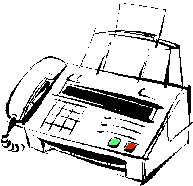
These materials must be on 8.5" X 11" plain background paper (which is scannable), and must be submitted with one of the following:
- Return Information Routing Sheet (including the routing sheet for invoices)
- Prior Approval Change Request Form
- Electronic Transaction Attachment Scanning Sheet
These forms contain the key information (prior approval number and Reviewer identification number as appropriate) to match the faxed materials to the original prior approval. These forms include the CSC fax number and a place for your fax number.
CSC will fax back to the sender a cover sheet of explanation when an unreadable fax is received. There will be no change in where you obtain the forms (e.g., Return Information Routing Sheet comes with a Missing Information Letter, or "Invoice" Letter , and both the Prior Approval Change Request form and Electronic Transaction Attachment Scanning Sheet are available on the eMedNY website under Featured Links click on "eMedNY Paper Forms").
The original Prior Approval Request cannot be faxed and will still be required to be submitted to CSC via paper, electronic 278, or ePACES submission.
This will be the source of the prior approval number that needs to be recorded on the appropriate form or sheet above.
NOTE: This process DOES NOT apply to drug prior authorizations.
Questions? Please call CSC at (800) 343-9000
National Provider Identifier (NPI) News
Return to Table of Contents
New York State Medicaid will be collecting information from providers about their National Provider Identifiers NPI(s) in two separate ways. Medicaid will utilize this information to create a crosswalk for use within the eMedNY system to process all electronic healthcare transactions. Currently, the federal mandate to use only the NPI for covered electronic healthcare transactions begins May 23, 2007.

Proprietary identifiers are not to be used in electronic healthcare transactions beginning on that date. Providers that do not qualify to obtain an NPI will continue to submit transactions using the eMedNY provider ID and locator.
The methods Medicaid will use to collect NPI(s) are as follows:
- Providers may enter the information on the http://www.eMedNY.org website. Providers or their representatives will need to have the NPI(s) they've obtained along with their eMedNY provider ID(s) and Tax Identification Number (TIN). The TIN will be a social security number or an employer identification number, as appropriate.
- Providers who have the ability to report both the NPI and their existing eMedNY ID on their submitted claims are encouraged to do so as soon as able. Medicaid will then use the information included on the claim to build a crosswalk. In order to make this crosswalk successful, it is important accurate service location information is provided. These addresses must include the full nine digit ZIP code (referred to as ZIP+4). For more information on how to complete an 837 claim with NPI information, updated companion guides may be found at:
http://www.emedny.org/hipaa/emedny_transactions/transactions.html
The implementation of the NPI also requires each provider identified, or represented, in a covered healthcare transaction be identified by their NPI. This concerns all providers who perform services that require an ordering, referring or prescribing provider, especially true for lab, pharmacy and durable medical equipment providers. Providers should plan their data collection efforts to mitigate any negative impacts that may be caused by not having collected NPI information for all providers required in any electronic healthcare transactions.
Return to Table of Contents
Do you suspect that a recipient or a provider has engaged in fraudulent activities?
Please call:
1-877-87FRAUD
(1-877-873-7283)
Deficit Reduction Act of 2005
Long-Term Care Eligibility Changes
Return to Table of Contents
The Deficit Reduction Act (DRA) of 2005 and Chapters 54 and 57 of the Laws of 2006 made changes to the eligibility requirements for long-term care services. These changes, with the exception of the home equity limitation, apply to applications for Medicaid coverage of nursing facility services filed on or after August 1, 2006.
Major Changes
- Asset Transfer Rules
- Look-Back and Penalty Period
- Availability of an Undue Hardship Waiver
- Annuities
- Treatment of Transfers to Purchase Loans, Notes and Mortgages and Life Estate Interest
- Treatment of Substantial Home Equity
- Continuing Care Retirement Community Contracts
Asset Transfer Rules
- For transfers made on or after February 8, 2006, if an individual applies for nursing facility services within five years, or 60 months, of the date of transfer, the transfer will result in a period of ineligibility for nursing facility services. The begin date for the period of ineligibility is changed to the month following the month of transfer, or the month the individual is otherwise eligible for and receiving nursing facility services, whichever is later.
- For transfers made on or after February 8, 2006, the individual, the individual's spouse, representative and/or nursing facility, with consent from the institutionalized individual, the individual's spouse, or representative may apply for an undue hardship waiver.
- As a condition of Medicaid eligibility for nursing facility services, the applicant/recipient (A/R) must provide documentation of any interest the A/R or the A/R's spouse has in an annuity, regardless of whether the annuity is irrevocable or treated as an asset. If the A/R or the A/R's spouse purchased an annuity on or after February 8, 2006, and the A/R is seeking Medicaid coverage for nursing facility services, the State must be named as remainder beneficiary or the purchase of the annuity will be considered an uncompensated transfer of assets. In addition, when an annuity is purchased by or on behalf of an A/R, the purchase will be treated as a transfer of assets for less than fair market value unless the annuity meets certain criteria, i.e. no deferral or balloon payments.
- Funds used to purchase a promissory note, loan or mortgage on or after February 8, 2006, will be treated as an uncompensated transfer of assets unless the note, loan or mortgage meets specific criteria.
- The purchase of a life estate interest in another individual's home is treated as an uncompensated transfer of assets unless the purchaser resided in the home for a period of at least one year after the date of purchase.
Substantial Home Equity Limitation
- Effective for applications filed on or after January 1, 2006, individuals with equity interest in their home of greater than $750,000 are excluded from Medicaid eligibility for nursing facility services and community-based long-term care.
- Individuals with excess home equity are not excluded from other Medicaid covered care and services.
- The home equity limitation does not apply if the individual's spouse, minor child or certified blind or certified disabled child lawfully resides in the home.
- Recipients may apply for an undue hardship waiver.
Continuing Care Retirement Community Contracts
- Individuals with contracts for admission to a State licensed, registered, certified or equivalent continuing care retirement community (CCRC) or life care community may be required to spend on their care resources declared for purposes of admission before applying for Medicaid.
- Under certain circumstances an individual's paid entrance fee to a CCRC or life care community will be considered a resource when determining Medicaid eligibility.
Additional Information
Long-term care providers will receive a letter specifically detailing these changes.
If any further questions exist, please call the Bureau of Medicaid Eligibility Operations and Family Health Plus at (518) 474-8887.
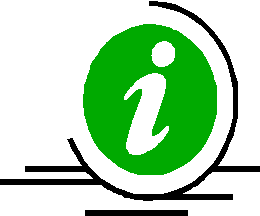
Do You Have a Question About Medicaid Transportation?
Return to Table of Contents
Send an email to:
MedTrans@health.state.ny.us
Attention
All Practitioners and
Ordered Ambulatory
Providers
Prepayment Review Has Ended
For Some Procedures
Return to Table of Contents
The Division of Medical Review and Provider Enrollment has concluded its prepayment review on the procedure codes listed below.
Effective for dates of service on and after August 1, 2006, supporting documentation and paper billing will no longer be required as a part of this review.
- However, all services rendered during the period of May 1 through July 31, 2006, other than Medicare coinsurance claims, must continue to meet this requirement as originally presented in the April 2006 Medicaid Update. The other procedure codes, included in the April 2006 article and not listed below, will continue to require prepayment review.
| 76811 | Ultrasound, Pregnant Uterus, Real Time With Image Documentation, Fetal And Maternal Evaluation Plus Detailed Fetal Anatomic Examination, Transabdominal Approach; Single Or First Gestation |
| 90862 | Pharmacologic Management, Including Prescription, Use, And Review Of Medication With No More Than Minimal Medical Psychotherapy |
| 92014 | Ophthalmological Services: Medical Examination And Evaluation, With Initiation Or Continuation Of Diagnostic And Treatment Program; Comprehensive, Established patient, One Or More Visits |
| 92083 | Visual Field Examination, Unilateral Or Bilateral, With Interpretation And Report; Extended Examination (Eg, Goldmann Visual Fields With At Least 3 Isopters Plotted And Static Determination Within The Central 30 Degrees, Or Quantitative, Automated Threshold Perimetry, Octopus Program G-1, 32 Or 42, Humphrey Visual Field Analyzer Full Threshold Programs 30-2, 24-2, Or 30/60-2) |
OPTOMETRISTS AND OPHTHALMOLOGISTS
Exams providing routine monitoring of eye disease (e.g., diabetes, glaucoma, macular degeneration, etc.) with or without fundus dilation, which do not include initiation of diagnostic and treatment program/s and determination of the refractive state (unless otherwise clinically contraindicated), should be billed using the Evaluation and Management Services codes for either Office Services-All Physicians Primary Care Office Services (99201 et seq), or Visits by Specialists in the Ophthalmology listing (99221 et seq).
Claims for such routine eye care should not be billed using procedure codes
92002, 92004, 92012 or 92014.
Questions regarding this review? Please contact the
Division of Medical Review and Provider Enrollment's Medical Pended Claims unit at
(800) 562-0856.
Attention
Private Duty Nursing,
Out-of-State Inpatient
Hospital,
Durable Medical Equipment
Prior Approval Reviews For Clients Residing In Western New York
For Some Procedures
Return to Table of Contents
For the following services, prior approval reviews on behalf of clients residing in Allegany, Cattaraugus, Chautauqua, Erie, Genesee, Niagara, Orleans and Wyoming Counties will be transferred from the Western Regional Office in Buffalo to the Bureau of Medical Review and Provider Enrollment in Albany.
Private Duty Nursing Services

Beginning August 1, 2006, mail completed prior approval request forms to:
Computer Sciences Corporation
PO Box 4610
Rensselaer, NY 12144-4610.
Please fill in the PA REVIEW OFFICE CODE field with "A-1".

NOTE: Discharge planners, case workers and providers facilitating a new PDN case, should call the Bureau at (800) 342-3005 for specific instructions.
EXCEPTION: For ERIE COUNTY clients, the Erie County Department of Social Services, C.A.S.A Unit will continue to process PDN prior approvals and that function will not transfer to Albany.
Out-of-State Inpatient Hospital Services
Beginning August 1, 2006, requests for out-of-state inpatient hospital services should be mailed to:
NYSDOH Medical Prior Approval
Bureau of Medical Review and Provider Enrollment
150 Broadway, Suite 6E
Albany, NY 12204-2736.
Requests can also be faxed to (518) 402-3253.
Durable Medical Equipment

Beginning November 1, 2006, mail completed prior approval request forms to:
Computer Sciences Corporation
PO Box 4610
Rensselaer, NY 12144-4610.
Please fill in the PA REVIEW OFFICE CODE field with "A-1".
Questions? Contact the Bureau of Medical Review and Provider Enrollment at (518) 474-3575 or (800) 342-3005.
In New York State...
- Diabetes is the 5th leading cause of death among adults 45 to 64 years of age.
- Diabetes was recently determined to be the 4th leading cause of death in New York City.
- Approximately 1.1 million adults (7.7 percent of the adult population) are estimated to have diagnosed diabetes, and an additional 450,000 adults remain undiagnosed.
- Recent data indicates that diabetes accounts for nearly 400,000 hospital discharges statewide, over 5,000 non-traumatic lower extremity amputations, 2,900 new cases of end-stage renal disease, and 2,600new cases of blindness annually.
The Department of Health Diabetes Prevention and Control Program (DPCP) currently contracts with a network of 15 regionally-based Community Coalitions for Diabetes Prevention, which address both primary and secondary diabetes prevention in adults. These coalitions provide a variety of services including:
- Public education on diabetes awareness and prevention;
- Practitioner education, patient self-management education programs;
- Sponsorship of community functions for patients with or at risk for diabetes; and
- Risk assessment for diabetes.
These services, along with diabetes educational materials and other diabetes referrals and services may be obtained by contacting the following Diabetes Coalitions:
| Coalition Name | Contractor | Telephone | Counties Served |
| Western NY Coalition for Diabetes Prevention | Erie County Department of Health | (716) 858-7695 | Erie, Chautauqua, Cattaraugus, Niagara, Orleans, Genesee, Wyoming, Allegany |
| Coalition Diabetes Action Prevention Team | Via Health/Rochester General Hospital | (585) 922-4140 | Monroe, Wayne, Ontario, Seneca, Schuyler, Chemung, Steuben, Yates, Livingston |
| Central NY Diabetes Prevention Partnership | Seven Valleys Health Coalition | (607) 756-4198 | Onondaga, Madison, Cayuga, Cortland, Tompkins |
| Southern Tier Healthy Living Partnership | Broome County Health Department | (607) 778-2802 | Broome, Delaware, Tioga, Chenango |
| Community Diabetes Recognition & Outreach Program (C-DROP) | Faxton St. Lukes Healthcare | (315) 624-5620 | St. Lawrence, Jefferson, Lewis, Oswego, Oneida, Herkimer |
| Seven County Diabetes Network | Glens Falls Hospital | (518) 926-5920 | Clinton, Franklin, Essex, Hamilton, Warren, Washington, Saratoga |
| Healthy Living Partnership | Otsego County Department of Health | (607) 547-4230 | Fulton, Montgomery, Otsego, Schoharie |
| Greater Capital Region Coalition for Diabetes Prevention & Control | Northeast Health | (518) 447-3501 | Schenectady, Rensselaer, Albany, Columbia, Greene |
| Mid-Hudson Catskill Diabetes Coalition | Catskill Regional Medical Center | (845) 794-3300 | Ulster, Dutchess, Sullivan, Orange |
| Pinnacle Coalition for Diabetes Prevention & Management | Pinnacle Healthcare | (914) 741-6744 | Putnam, Rockland, Westchester |
| Bronx Health REACH | Institute for Urban Family Health | (212) 633-0800 | Bronx, Queens |
| East Harlem Diabetes Center for Excellence | Mt. Sinai School of Medicine | (212) 659-9567 | New York, Richmond |
| Diabetes Education & Empowerment Program | St. Luke's/Roosevelt Hospital Center | (212) 523-5934 | New York, Richmond |
| Lower Extremity Amputation Coalition | SUNY Downstate Medical Center | (212) 270-1542 | Kings |
| Diabetes Resource Coalition of Long Island | Cornell Cooperative Extension of Suffolk County | (631) 727-7850 | Nassau, Suffolk |
The Medicaid Program reimburses for medically necessary care, services and supplies for the diagnosis and treatment of diabetes. For more information, please contact the Program Quality and Initiatives unit at (518) 474-9219.
For more information on diabetes, please go to the Department website at:
http://www.nyhealth.gov/diseases/conditions/diabetes/index.htm"
or call the Diabetes Control Program at (518) 474-1222.
New York State Medicaid
Stop Smoking
Return to Table of Contents
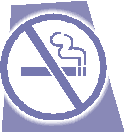
Quitting takes a lot of hard work and effort, but the reward can be a longer, more satisfying life.
Before you quit:
- If you usually keep cigarettes next to the bed, try putting them in another room, or in the car.
- Keep water available and drink water instead of puffing on a cigarette.
- Try drinking tea or hot chocolate rather than coffee in the morning.
- Delay having your first cigarette for as long as you can in the weeks leading up to your quit date.
- Decide that you're only going to smoke outside and be true to that decision.
After you quit:
- If you start thinking about smoking, immediately take your thoughts off smoking and focus on the reasons why you decided to quit.
- Take ten deep breaths to relax, and then remember how much effort you've put into quitting.
- Take a bath or shower as soon as you're awake. It's hard to smoke when you're soaking wet.
- Go for an early morning walk, and then do your usual activities.
- Eat a healthy breakfast.
- Have a glass of water.
- Carry low-calorie snacks to munch on, (life savers/vegetables etc.), when craving a cigarette.
Remember, your choice to be tobacco-free takes patience and practice, and means you must make changes in your routine and lifestyle.
New York State Medicaid Smoking Cessation Policy
- For all smoking cessation products, the recipient must have an order. A prescription is the terminology for an order of a prescription product. A fiscal order refers to an order, which looks just like a prescription-written on a prescription blank, for an over-the-counter product.
- Smoking cessation therapy consists of prescription and non-prescription agents. Covered agents include nasal sprays, inhalers, Zyban (bupropion), over-the-counter nicotine patches, and gum.
- Two courses of smoking cessation therapy per recipient, per year are allowed. A course of therapy is defined as no more than a 90-day supply (an original order and two refills, even if less than a 30-day supply is dispensed in any fill).
- If a course of smoking cessation therapy is interrupted, it will be considered one complete course of therapy. Any subsequent prescriptions would then be considered the second course of therapy.
- Multiple smoking cessation therapies, using different routes of administration, are allowed (e.g., Zyban and nicotine patches may be used concomitantly if warranted). Professional judgment should be exercised when dispensing multiple cessation products.
- Duplicative use of any one agent is not allowed (i.e., same drug and same dosage form and same strength).
NYS Smokers Quitline (866)NY-QUITS
(866-697-8487)
The NYS Smokers Quitline staffs trained specialists who will screen patients for Replacement Therapy and provides cessation counseling. Free Quitline services are also offered for providers and include:
- Patient Referral Forms and Quitline RX pads;
- Office materials including cessation guides, posters and Quitline handout cards:
- Health Care Provider Quit Kit, which includes office materials, Fax-To-Quit program forms, materials order form and more.
Additional Resources
- American Cancer Society (800) 227-2345
- American Lung Association (800) 586-4872
- Centers for Disease Control and Prevention
(Request the Office of Smoking and Health) (800) CDC-1311/1-800-232-1311 - National Cancer Institute (800) 4-CANCER (800-422-6237)
Information adopted from the following resources:
http://www.nyhealth.gov/health_care/medicaid/program/update/medup-q-s.htm#smok
For more information on the New York State Medicaid Smoking Cessation Policy, please contact pharmacy policy and operations staff at:
518-486-3209.
This article contains UPDATED information. The original article appeared in the June 2006 Medicaid Update
Effective July 1, 2006, Family Health Plus enrollees in plans that do not cover family planning and reproductive health services can access these services from qualified Medicaid providers and pharmacies.
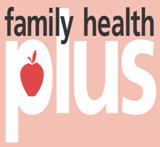
This change applies only to FHPlus enrollees of CenterCare (plan code 91), the NYS Catholic Health Plan (d/b/a Fidelis Care New York ) (plan code SP), and Suffolk Health Plan (plan code SK), which will offer FHPlus in Suffolk County starting July 1, 2006.
Here is some important information:
How can providers identify these FHPlus enrollees?
Providers will receive the eligibility messages:
- ARU message: "Family Health Plus," "Insurance Coverage Code "SP", "91" or "SK"
- OMNI 3750 message: "Other or Additional Payor" for Elig-Ben Info, "FAMILY HEALTH PLUS" for Plan, and "91", "SP" or "SK" for Plan Cd.
- ePACES message: "Other or Additional Payer" for Eligibility Information, "FAMILY HEALTH PLUS" for Plan Name, and "91" , "SP" or "SK" for Carrier Code
- NCPDP (Family Planning Drug or Supply) message: 017 - Family Health Plus Services Only, and "91", "SP" or "SK" for Plan Cd
- NCPDP (Not a Family Planning Drug or Supply) message: 017 - Family Health Plus Services Only, 719 - MA Only Covers Family Planning, and 65 - Patient is not covered.
- PC - Host and Batch message: "R"
How do providers submit claims for family planning and reproductive health services provided to Family Health Plus (FHPlus) enrollees in these plans?
As indicated in the June 2006 Medicaid Update article , providers should use the patient's Client Identification Number (CIN) located on the health plan identification card to bill eMedNY, (providers can also use the patient's CIN to verify coverage and plan enrollment through eMedNY.)
For some FHPlus members, a provider will also need to enter a sequence number when the claim is entered on the same day as the service is rendered. The sequence number will not be shown on the health plan card.
If you receive one of the error messages below, ask the patient for their CBIC, or "BENEFIT CARD". It will show the sequence number. If the patient does not have the CBIC card with them, the provider should call the eMedNY Helpline for assistance at: 1-800-343-9000.
Error Messages
- ARU - Invalid Sequence Number
- OMNI 3750, ePACES - Invalid/Missing Subscriber/Insured ID
- NCPDP - 063 Invalid Sequence Number and 08 M/I Person Code
- PC - Host, Batch - 72 Invalid/Missing Subscriber/Insured ID
Please refer to the provider manuals and HIPAA837 Companion Guides at http://www.emedny.org, for details on the codes and fields to identify these services.
Your Provider Manual is
Going Online!
Return to Table of Contents
Policy sections of the following manuals are now available online at:
http://www.emedny.org/ProviderManuals/index.html
- Assisted Living Program
- Chiropractor
- Clinical Psychology
- Comprehensive Medicaid Case Management
- Dental
- Durable Medical Equipment
- Early Periodic Screening Diagnosis & Treatment for Child Health Plus A
- Hearing Aid
- Home & Community Based Services
- Laboratory
- Limited License Home Care
- Midwife
- Nurse Practitioner
- Personal Care
- Personal Emergency Response System
- Physician
- Private Duty Nursing
- School Supportive Health Services Program
- Transportation
- Traumatic Brain Injury Waiver
- Vision Care
Click on the link to your manual and you will be brought to your Provider Manual website where you will find information including billing instructions, fee schedules, and much more.
As a provider, it is your responsibility to check this website on a monthly basis to ensure you are current with the latest policy information.
Providers are also responsible for information included in the Information for All Providers section, including general Medicaid policy, general billing, inquiry and third party information.
If you do not have access to the internet, you must contact Computer Sciences Corporation to receive a hard copy of your provider manual at (800) 343-9000.
Medicaid Information Available Online
Return to Table of Contents
To remain up-to-date with changes related to paper and electronic Medicaid transaction processing, please visit the eMedNY website at http://www.emedny.org. This website contains the most current information related to the New York State Medicaid program; you will be able to download or print forms and publications necessary to conduct business with New York State Medicaid.
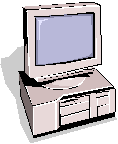
Below is a list of some of the information available to you via the website Main page.
What's New:
- Letters and announcements about recent changes to the Medicaid program.
Information:
- Provider enrollment and update information forms.
- Past and present Medicaid Updates.
- Frequently asked questions.
- Online license verification website - NYS Education Department's Office of the Professions.
Provider Manuals:
- Online Provider Manuals (includes policy guidelines, billing instructions, procedure codes and fee schedules, prior approval instructions), MEVS manuals, and much more.
Specifications:
- Quick reference guides for completing claims and Threshold Override Applications.
Training:
- Online information and registration for Medicaid seminars in your area.
Contacts:
- Contact information for CSC, DOH and other health related information resources.
NY HIPAA DESK:
- Electronic HIPAA transaction specifications (Companion Documents).
- Registration information and forms for electronic submissions.
- Vendor information.
Please visit this website often to stay current with the latest information.
Questions about the website can be directed to the CSC Call Center at:
(800) 343-9000.
Thank you for your continued participation in the New York State Medicaid Program!
Seminar Schedule and Registration
Return to Table of Contents
- Do you have billing questions?
- Are you new to Medicaid billing?
- Would you like to learn more about ePACES?
If you answered YES to any of these questions, please consider registering for a Medicaid seminar. Computer Sciences Corporation (CSC) offers various types of seminars to providers and their billing staff. Many of the seminars planned for the upcoming months offer detailed information and instruction about Medicaid's web-based billing and transaction program - ePACES. ePACES seminars are designed for specific provider types.
ePACES is the electronic Provider Assisted Claim Entry System that allows enrolled providers to submit the following type of transactions:
- Claims
- Eligibility Verifications
- Utilization Threshold Service Authorizations
- Claim Status Requests
- Prior Approval Requests
Professional providers such as physicians, nurse practitioners and private duty nurses can even submit claims in "REAL-TIME" via ePACES. Real-time means that the claim is processed within seconds and professional providers can get the status of a real-time claim, including the associated paid amount, without waiting for the remittance advice to be delivered.
Seminar locations and dates are available at the eMedNY website. Seminar registration is fast and easy. Seminars are free to enrolled Medicaid providers.
Go to http://www.emedny.org and select "Training" to find and register for the eMedNY Training Seminar appropriate for your provider category and location. Review the seminar descriptions carefully to identify the seminar appropriate to meet your training needs. Registration confirmation will be instantly sent to your email address.
If you are unable to access the Internet to register, you may also request seminar schedule and registration information by contacting CSC's Fax on Demand at 800-370-5809. Request document number 1002 for a list of seminars and registration information to be faxed to you. Please contact the eMedNY Call Center at (800) 343-9000 if you have questions about registration.
CSC Regional Representatives look forward to meeting with you at upcoming seminars!
Please feel free to copy and distribute this information to your patients.
WEAR SUNSCREEN!
Return to Table of Contents
More than 800,000 new cases of skin cancer are diagnosed annually in the United States, making it the most common form of cancer!
Fortunately, it is one of the most curable forms of cancer when discovered early, and, better still, it can be prevented.
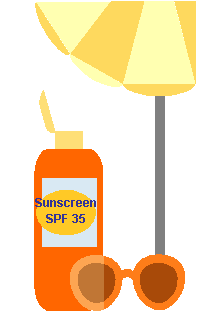
Is Skin Cancer Serious?
Malignant melanoma, one form of skin cancer, is serious because it can spread quickly and can involve other organs of your body. Since 1950, this form of skin cancer has increased fivefold in males and almost tripled in females. Fortunately, early diagnosis can prevent most deaths occurring from this type of skin cancer.
Who is at Risk of Skin Cancer?
People who should be especially careful are those with fair skin that burns and freckles easily, those with light eyes, and red or blond hair. People who have many moles or have family members who have had melanoma are more likely to develop skin cancer. People of all skin types should know that exposure to ultraviolet radiation can also speed skin aging and wrinkling.
Special Cancer Concerns
Be alert to changes in the number, size, shape or color of moles and other pigmented areas. Also, look for changes in the surface of a mole, such as scaliness; oozing; bleeding or the appearance of a bump;redness or a new swelling beyond the mole's edge; or changes in sensation; such as itchiness, tenderness or pain.
___________________________________________________
Use this simple "ABCD" rule to help you remember important warning signs:
- Asymmetry: One half does not match the other half.
- Border Irregularity: The edges are ragged, notched or blurred.
- Color: The pigmentation is not uniform. Shades of tan, brown and black are present. Red, white or blue may add to the mottled appearance.
- Diameter: It is greater than six millimeters in diameter (the size of a pencil eraser). Any sudden or continuous increase in size should be of special concern.
For more information, please go to: http://www.nyhealth.gov/nysdoh/cancer/center/cancerhome.htm
Free HIV/AIDS Trainings
Return to Table of Contents
The New York State Department of Health AIDS Institute has identified training centers offering FREE training for non-physician health and human service providers.
A statewide calendar of HIV/AIDS training will be issued in the fall of 2006.
REGIONAL HIV/AIDS TRAINING CENTERS
| Area(s) Served | Name | Telephone | Website |
|---|---|---|---|
| New York City | AIDS Community Resources of America Cicatelli Associates, Inc. NDRI, Inc. |
(212) 924-3934 (212) 594-7741 (212) 845-4550 | www.acria.org http://www.cicatelli.org www.training.ndri.org |
| Long Island | Center for Public Health Education | (631) 444-3245 | www.hsc.stonybrook.edu/shtm/cphe/index.cfm |
| Westchester/Lower Hudson Valley | AIDS Related Community Services | (914) 785-8364 | www.arcs.org |
| Southern Tier | Southern Tier AIDS Program | (607) 798-1706 | www.stapinc.org |
| Finger Lakes & Western NY | Center for Health & Behavioral Training American Red Cross of Greater Buffalo | (585) 753-5382
(716) 878-2391 | www.urmc.rochester.edu/chbt or email chbt@monroecounty.gov www.buffaloredcross.org |
| Central NY | Family Ties Network | (315) 424-0009 | http://www.familytiesnetwork.org |
| Capital District & North Country | Professional Development Program Rockefeller College, University at Albany | (518) 591-8719 | http://www.pdp.albany.edu |
STATEWIDE HIV/AIDS TRAINING CENTERS
| Centers of Expertise... | Training Center Name | Telephone | Website |
|---|---|---|---|
| Case Management | Cicatelli Associates, Inc. Professional Development Program, Rockefeller College, University at Albany Center for Public Health Education | (212) 594-7741 (518) 591-8719 (631) 444-3245 | http://www.cicatelli.org www.pdp.albany.edu www.hsc.stonybrook.edu/shtm/cphe/index.cfm |
| Training-of-Trainers Program | Family Ties Network | (315) 424-0009 | www.familytiesnetwork.org |
| Emerging Issues of Substance Abuse | Harm Reduction Coalition | (212) 213-6376 | www.harmreduction.org |
| Behavioral Social Science | Center for Health and Behavioral Training | (585) 753-5382 |
www.urmc.rochester.edu/chbt or email chbt@monroecounty.gov |
For more information, please contact the training center directly or visit the Department website at:

PROVIDER SERVICES
Return to Table of Contents
Missing Issues?
The Medicaid Update, now indexed by subject area, can be accessed online at the New York State Department of Health website:
http://www.nyhealth.gov/medicaid/program/update/medup-index.htm
Hard copies can be obtained upon request by emailing: MedicaidUpdate@health.state.ny.us or by calling (518) 474-9219.
Do You Suspect Fraud?
If you suspect that a recipient or a provider has engaged in fraudulent activities, please call the fraud hotline at: 1-877-87FRAUD. Your call will remain confidential.
As a Pharmacist, Where Can I Access the List of Medicaid Reimbursable Drugs?
The list of Medicaid reimbursable drugs is available at: http://www.eMedNY.org/info/formfile.html
Questions About an Article?
For your convenience each article contains a contact number for further information, questions or comments.
Do You Want Information On Patient Educational Tools and Medicaid's Disease Management Initiatives?
Contact Department staff at (518) 474-9219.
Questions About HIPAA?
Please contact CSC Provider Services at (800) 343-9000.
Address Change?
Questions should be directed to CSC at (800) 343-900, option 5.
Patient Eligibility
Call the Touchtone Telephone Verification System (800) 997-1111, (800) 225-3040 or (800) 343-9000.
Fee-for-service Provider Enrollment
A change of address form is available at:
http://www.emedny.org/info/ProviderEnrollment/Provider%20Maintenance%20Forms/6101-Address%20Change%20Form.pdf.
Rate-based/Institutional Provider Enrollment
A change of address form is available at:
http://www.emedny.org/info/ProviderEnrollment/Provider%20Maintenance%20Forms/6106-Rate%20Based%20Change%20of%20Address%20Form.pdf
Billing Question? Call Computer Sciences Corporation:
Provider Services (800) 343-9000.
Comments and Suggestions Regarding This Publication?
Please contact the editor, Timothy Perry-Coon at MedicaidUpdate@health.state.ny.us or via telephone at (518) 474-9219 with your concerns.
The Medicaid Update: Your Window Into The Medicaid Program
The State Department of Health welcomes your comments or suggestions regarding the Medicaid Update.
Please send suggestions to the editor, Timothy Perry-Coon:
NYS Department of Health
Office of Medicaid Management
Bureau of Program Guidance
99 Washington Ave., Suite 720
Albany, NY 12210
(e-mail MedicaidUpdate@health.state.ny.us)
The Medicaid Update, along with past issues of the Medicaid Update, can be accessed online at the New York State Department of Health web site:http://www.health_care/medicaid/program/update/main.htm
